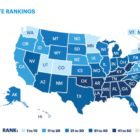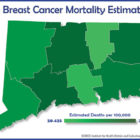Disparities
Food Pantries Urged To Stock Nutritious Foods To Encourage Healthy Eating
|
People struggling with hunger suffer from a disproportionate number of chronic illnesses and often rely on food pantries for their groceries. So, pantries are now being urged to undergo a sea change and abandon their traditional emphasis on calories and nonperishable items in favor of more nutritional food. In Connecticut, 440,000 people are food insecure, which means they have limited or uncertain access to sufficient nutritious food, according to 2017 U.S. Department of Agriculture figures, the latest available. They comprise 12.2 percent of the state’s population.People with food insecurity are 25 percent more likely to have heart disease and diabetes, and 50 percent more likely to have kidney disease, cites Feeding America, a national food bank network. “These issues can be prevented or managed better with a proper diet rich in fresh fruits and vegetables, lean meats and whole grains,” said Michelle Lapine McCabe, director of the Center for Food Equity and Economic Development, based in Bridgeport.



